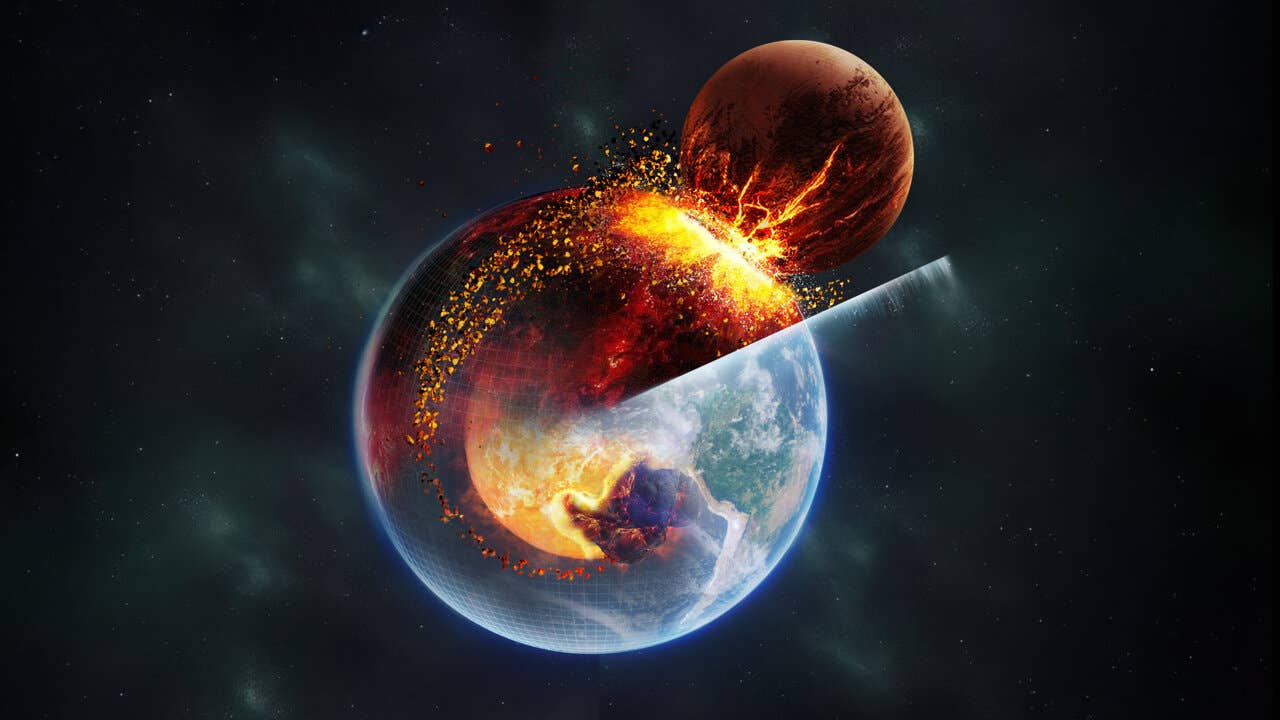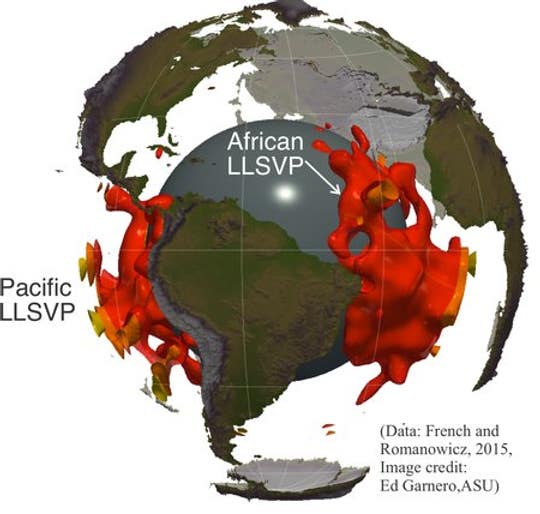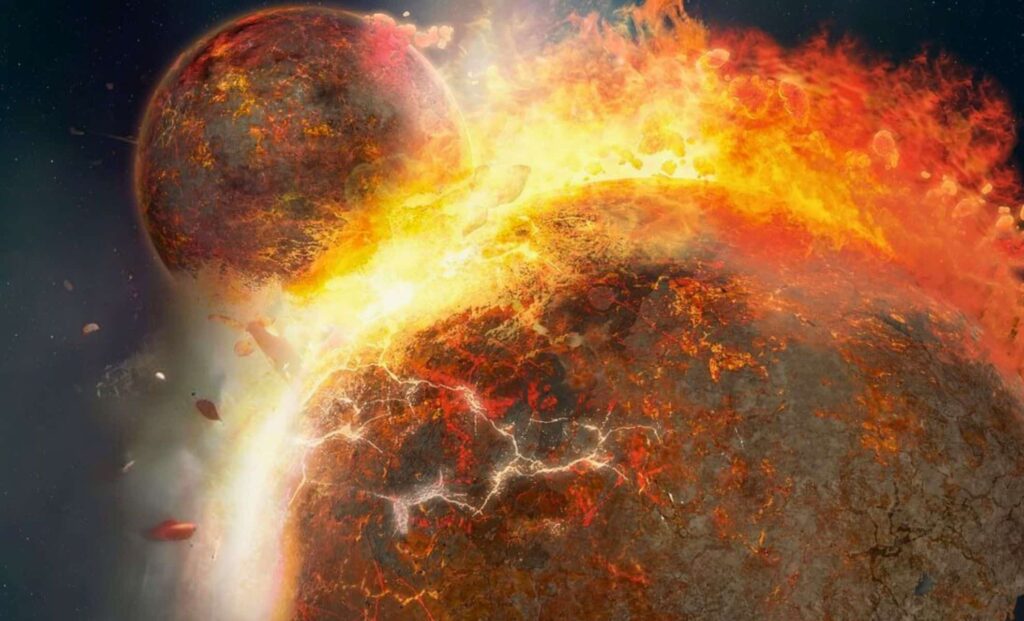Deep beneath the Earth’s surface, far below the reach of drills or direct observation, scientists have identified two massive formations that may be something far more extraordinary than previously imagined. These subterranean zones, located beneath Africa and the Pacific Ocean, have long intrigued geophysicists due to their unusual behavior—now, a new theory suggests they could be the remnants of a lost planet that collided with Earth billions of years ago.
The structures, known as large low-velocity provinces, or LLVPs, are massive accumulations of material in the lower mantle. They are characterized by their ability to slow down seismic waves, indicating that they are denser and perhaps compositionally different than the surrounding mantle. Recent research suggests these anomalies could be the leftover debris of Theia, a theorized Mars-sized planet that is believed to have struck the early Earth in a cataclysmic event that also gave rise to the Moon.
Giant Blobs Beneath the Surface
The LLVPs are located roughly 2,900 kilometers beneath the surface—close to Earth’s core-mantle boundary. Each of the two formations spans thousands of kilometers and is thought to be nearly twice the size of the Moon. Scientists have known about them for years thanks to seismic imaging, which revealed their size and the way they disrupt waves traveling through Earth’s interior.
What has remained elusive is their origin. The LLVPs are between 2 to 3.5 percent denser than the surrounding mantle, and they do not appear to be the result of ordinary geological processes. Their distinctive properties led researchers to question whether they might have a different origin altogether.
A new study published in Nature and led by researchers from the California Institute of Technology, or Caltech, proposes that the LLVPs are in fact composed of iron-rich fragments from Theia. “It’s a radical idea,” said one scientist involved in the research, “but it fits the data surprisingly well.”

Theia’s Violent Legacy
The collision with Theia is thought to have occurred approximately 4.5 billion years ago, when the early Earth was still forming. The event is widely considered to be the source of the Moon, created from debris ejected into orbit by the impact. But while the Moon’s origin has been studied in detail, what became of Theia’s remaining material has remained a mystery.
Qian Yuan, a geophysicist at Caltech, began pursuing this question after attending a 2019 lecture on the giant-impact hypothesis. The idea that the LLVPs might be remnants of Theia intrigued him. With support from a multidisciplinary team that included geochemists and geodynamicists, Yuan helped lead a series of simulations to test how such an impact could have played out deep within Earth.
The models showed that large portions of Theia’s mantle could have merged with Earth’s, eventually settling into stable, dense regions in the lower mantle. These regions, less affected by the energy of the collision, would have retained their distinct composition—dense enough to remain anchored near the planet’s core for billions of years.


A Collision That Shaped More Than the Moon
The study’s simulations indicate that the energy from the impact was not evenly distributed. The lower mantle, being cooler and more insulated, likely absorbed the shock differently, allowing heavier, iron-rich fragments of Theia to descend and coalesce without fully mixing with Earth’s existing mantle. This would explain why the LLVPs are localized and not spread evenly throughout the planet’s interior.
The findings suggest that the structures could be far more than geologic oddities. If they are indeed remnants of Theia, they could have played a role in shaping Earth’s long-term geodynamic behavior, potentially influencing processes like mantle convection, plate tectonics, and even the development of Earth’s magnetic field.
A Window Into Planetary Evolution
Visual models produced by the researchers depict the two LLVPs as enormous “blobs” of dense material clinging to the core-mantle boundary. One rests beneath the African continent; the other lies deep beneath the Pacific. Both are roughly the same size, and their combined mass is immense.
Paul Asimow, a geologist and co-author of the study, emphasized the potential impact of the discovery. He noted that understanding these structures could provide insights not only into Earth’s past but also into the formative processes of other planetary bodies. If similar impacts occurred on Mars or Venus, their mantles may also contain deep, unmixed remnants from early collisions.
The study raises the possibility that Earth’s inner structure has been shaped by more than just internal processes. It may also carry the imprint of a planet that no longer exists. As Yuan and his colleagues continue to explore the consequences of the Theia hypothesis, the hidden formations beneath our feet remain silent witnesses to a violent cosmic origin.

